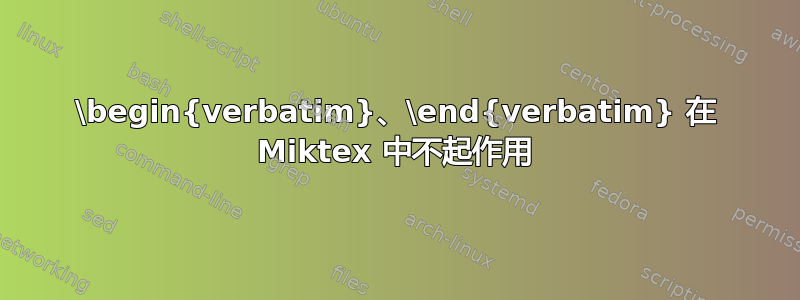
!LaTeX 错误:缺少 \begin{document}。但它并没有丢失!
以下是不起作用的 Latex 文本:
\documentclass[a4paper,UKenglish,cleveref, autoref, thm-restate]{lipics-v2021}
%\usepackage{verbatim}
%usepackage{gmverb}
\bibliographystyle{plainurl}% the mandatory bibstyle
\title{%
V -- A Formal Mathematical Language\\
\large Short paper
} %TODO Please add
%\titlerunning{Dummy short title} %TODO optional, please use if the title is longer than one line
\author{Ivan Ivanov}{Brooklyn, New York, USA \and \and \url{http://system.scienceontheweb.net} }{[email protected]}{https://orcid.org/0000-0003-2836-0352}{}%TODO mandatory, please use full name; only 1 author per \author macro; first two parameters are mandatory, other parameters can be empty. Please provide at least the name of the affiliation and the country. The full address is optional. Use additional curly braces to indicate the correct name splitting when the last name consists of multiple name parts.
%\authorrunning{J. Open Access and J.\, R. Public} %TODO mandatory. First: Use abbreviated first/middle names. Second (only in severe cases): Use the first author plus 'et al.'
\Copyright{Ivan Ivanov} %TODO mandatory, please use full first names. LIPIcs license is "CC-BY"; http://creativecommons.org/licenses/by/3.0/
%%%%%%%%%%%%%%\ccsdesc[100]{\textcolor{red}{Replace ccsdesc macro with valid one}} %TODO mandatory: Please choose ACM 2012 classifications from https://dl.acm.org/ccs/ccs_flat.cfm
%\keywords{Dummy keyword} %TODO mandatory; please add a comma-separated list of keywords please choose ACM 2012 classifications from https://dl.acm.org/ccs/ccs_flat.cfm
\begin{CCSXML}
<ccs2012>
<concept>
<concept_id>10003752.10003790.10002990</concept_id>
<concept_desc>Theory of computation~Logic and verification</concept_desc>
<concept_significance>500</concept_significance>
</concept>
</ccs2012>
\end{CCSXML}
\ccsdesc[500]{Theory of computation~Logic and verification}
\keywords{formalization of mathematics,formal mathematical language,proof assistant} %TODO mandatory; please add comma-separated list of keywords
%Editor-only macros:: begin (do not touch as author)%%%%%%%%%%%%%%%%%%%%%%%%%%%%%%%%%%
\EventEditors{John Q. Open and Joan R. Access}
\EventYear{2016}
\EventDate{December 24--27, 2016}
\EventLocation{Little Whinging, United Kingdom}
\EventLogo{}
\SeriesVolume{42}
\ArticleNo{23}
%%%%%%%%%%%%%%%%%%%%%%%%%%%%%%%%%%%%%%%%%%%%%%%%%%%%%%
\EventNoEds{2}
\EventLongTitle{42nd Conference on Very Important Topics (CVIT 2016)}
\EventShortTitle{CVIT 2016}
\EventAcronym{CVIT}
\begin{document}
\maketitle
%TODO mandatory: add short abstract of the document
\begin{abstract}
The V language is based on ZFC set theory and intended for use mostly in education.
So every proof step is quite simple and can be checked by a human.
The most important syntactic construct in V is set abstraction.
Set abstractions are used for defining theories, lambda and set builder notations, and notation for restricted quantification.
For testing the V language the following 3 modules (modules in V are similar to articles in Mizar)
\begin{verbatim}
0_root: elementary set theory;
1_group: the basics of group theory;
\end{verbatim}
\end{abstract}
\end{document}


